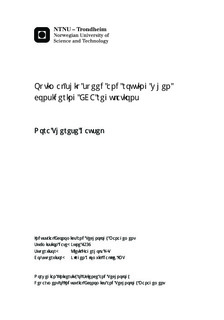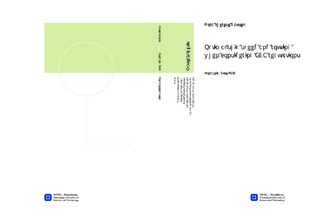| dc.description.abstract | Abstract
Annex VI of the MARPOL convention under the International Maritime Organization considers air pollution from ships and defines four Emission Control Areas (ECAs) with more stringent control of sulphur emissions. In 2015, the restrictions will tighten resulting in a sulphur limit of 0.1% within ECAs, whereas it is 3.5% outside ECAs. This thesis evaluates how the imposed regulations affect ship operations concerning speed and routing, and the associated consequences for the global environment.
In order to comply with ECA regulations, ships are assumed to apply fuel switching, where marine gas oil (MGO) with 0.1% sulphur content is consumed within ECAs and heavy fuel oil (HFO) is used elsewhere. MGO is more expensive than HFO, and the price differential induces the potential change in ship operations. Future fuel prices are uncertain, and the differential might increase due to higher demand for MGO when the ECA regulations tighten. A standard scenario is defined representing the current market situation, with MGO and HFO prices of USD 920 and 590 per tonne, respectively.
General optimisation models are developed for speed and routing decisions from a shipping company s point of view. The objective function minimises fuel costs, given as the product of fuel consumption and price for each of the fuels. Fuel consumption depends largely on speed, and it is often approximated as a cubic relation. Linear models are implemented using real data with discrete speed alternatives for which the fuel consumption for a given ship is known. Four different sub problems are studied, and speed is an important decision variable in all the corresponding models. The most emphasised problem includes alternative sailing leg options, where different legs are proposed between two ports so as to avoid stretches within ECA where the fuel is more expensive.
Findings show that ships would benefit from reducing speed within ECAs and compensate for the longer sailing time by speeding up on stretches outside ECAs. This leads to increased total fuel consumption compared to sailing at constant speed throughout the route, but the consumption of MGO is reduced from this strategy and so are total fuel costs. For the problem with fixed routes and sequences, the total fuel consumption is found to increase by 0.1-1% when ECAs are enforced. A greater increase appears for the variable leg problems, as total sailing distances increase in order to avoid ECA stretches. Speed consequently also increases to meet the generated time constraints. For this type of problem, the total fuel consumption is increased by around 3-7% for all the implemented cases.
The ECA regulations are intended to reduce sulphur emissions within the defined areas and protect coastal life from these harmful substances. Sulphur oxides (SOX) emissions are calculated for all the problems in this thesis, and a great reduction is expected to follow the tighter sulphur limits, both in total and especially within ECAs. CO2 emissions on the other hand are proportional to the total fuel consumption, and as such increase by the same relative amount of 0.1-1% for the fixed leg cases and 3-7% with variable legs. This increase is significant, and constitutes the downside of the predicted ECA implications. CO2 is an important greenhouse gas contributing to global warming. Costs of the different emissions are not estimated or compared, but the general findings are of great importance for the evaluation of ECA impacts on the global environment. | |

